Yao Deng
A Step-by-Step Guide to Creating a Robust Autonomous Drone Testing Pipeline
Jun 13, 2025Abstract:Autonomous drones are rapidly reshaping industries ranging from aerial delivery and infrastructure inspection to environmental monitoring and disaster response. Ensuring the safety, reliability, and efficiency of these systems is paramount as they transition from research prototypes to mission-critical platforms. This paper presents a step-by-step guide to establishing a robust autonomous drone testing pipeline, covering each critical stage: Software-in-the-Loop (SIL) Simulation Testing, Hardware-in-the-Loop (HIL) Testing, Controlled Real-World Testing, and In-Field Testing. Using practical examples, including the marker-based autonomous landing system, we demonstrate how to systematically verify drone system behaviors, identify integration issues, and optimize performance. Furthermore, we highlight emerging trends shaping the future of drone testing, including the integration of Neurosymbolic and LLMs, creating co-simulation environments, and Digital Twin-enabled simulation-based testing techniques. By following this pipeline, developers and researchers can achieve comprehensive validation, minimize deployment risks, and prepare autonomous drones for safe and reliable real-world operations.
Towards Robust Autonomous Landing Systems: Iterative Solutions and Key Lessons Learned
May 18, 2025Abstract:Uncrewed Aerial Vehicles (UAVs) have become a focal point of research, with both established companies and startups investing heavily in their development. This paper presents our iterative process in developing a robust autonomous marker-based landing system, highlighting the key challenges encountered and the solutions implemented. It reviews existing systems for autonomous landing processes, and through this aims to contribute to the community by sharing insights and challenges faced during development and testing.
SOTA: Spike-Navigated Optimal TrAnsport Saliency Region Detection in Composite-bias Videos
May 01, 2025Abstract:Existing saliency detection methods struggle in real-world scenarios due to motion blur and occlusions. In contrast, spike cameras, with their high temporal resolution, significantly enhance visual saliency maps. However, the composite noise inherent to spike camera imaging introduces discontinuities in saliency detection. Low-quality samples further distort model predictions, leading to saliency bias. To address these challenges, we propose Spike-navigated Optimal TrAnsport Saliency Region Detection (SOTA), a framework that leverages the strengths of spike cameras while mitigating biases in both spatial and temporal dimensions. Our method introduces Spike-based Micro-debias (SM) to capture subtle frame-to-frame variations and preserve critical details, even under minimal scene or lighting changes. Additionally, Spike-based Global-debias (SG) refines predictions by reducing inconsistencies across diverse conditions. Extensive experiments on real and synthetic datasets demonstrate that SOTA outperforms existing methods by eliminating composite noise bias. Our code and dataset will be released at https://github.com/lwxfight/sota.
OpenEarthSensing: Large-Scale Fine-Grained Benchmark for Open-World Remote Sensing
Feb 28, 2025Abstract:In open-world remote sensing, deployed models must continuously adapt to a steady influx of new data, which often exhibits various shifts compared to what the model encountered during the training phase. To effectively handle the new data, models are required to detect semantic shifts, adapt to covariate shifts, and continuously update themselves. These challenges give rise to a variety of open-world tasks. However, existing open-world remote sensing studies typically train and test within a single dataset to simulate open-world conditions. Currently, there is a lack of large-scale benchmarks capable of evaluating multiple open-world tasks. In this paper, we introduce OpenEarthSensing, a large-scale fine-grained benchmark for open-world remote sensing. OpenEarthSensing includes 189 scene and objects categories, covering the vast majority of potential semantic shifts that may occur in the real world. Additionally, OpenEarthSensing encompasses five data domains with significant covariate shifts, including two RGB satellite domians, one RGB aerial domian, one MS RGB domian, and one infrared domian. The various domains provide a more comprehensive testbed for evaluating the generalization performance of open-world models. We conduct the baseline evaluation of current mainstream open-world tasks and methods on OpenEarthSensing, demonstrating that it serves as a challenging benchmark for open-world remote sensing.
AI WALKUP: A Computer-Vision Approach to Quantifying MDS-UPDRS in Parkinson's Disease
Apr 02, 2024Abstract:Parkinson's Disease (PD) is the second most common neurodegenerative disorder. The existing assessment method for PD is usually the Movement Disorder Society - Unified Parkinson's Disease Rating Scale (MDS-UPDRS) to assess the severity of various types of motor symptoms and disease progression. However, manual assessment suffers from high subjectivity, lack of consistency, and high cost and low efficiency of manual communication. We want to use a computer vision based solution to capture human pose images based on a camera, reconstruct and perform motion analysis using algorithms, and extract the features of the amount of motion through feature engineering. The proposed approach can be deployed on different smartphones, and the video recording and artificial intelligence analysis can be done quickly and easily through our APP.
CUEING: A pioneer work of encoding human gaze for autonomous driving
May 25, 2023Abstract:Recent analysis of incidents involving Autonomous Driving Systems (ADS) has shown that the decision-making process of ADS can be significantly different from that of human drivers. To improve the performance of ADS, it may be helpful to incorporate the human decision-making process, particularly the signals provided by the human gaze. There are many existing works to create human gaze datasets and predict the human gaze using deep learning models. However, current datasets of human gaze are noisy and include irrelevant objects that can hinder model training. Additionally, existing CNN-based models for predicting human gaze lack generalizability across different datasets and driving conditions, and many models have a centre bias in their prediction such that the gaze tends to be generated in the centre of the gaze map. To address these gaps, we propose an adaptive method for cleansing existing human gaze datasets and a robust convolutional self-attention gaze prediction model. Our quantitative metrics show that our cleansing method improves models' performance by up to 7.38% and generalizability by up to 8.24% compared to those trained on the original datasets. Furthermore, our model demonstrates an improvement of up to 12.13% in terms of generalizability compared to the state-of-the-art (SOTA) models. Notably, it achieves these gains while conserving up to 98.12% of computation resources.
Deep Learning-Based Autonomous Driving Systems: A Survey of Attacks and Defenses
Apr 10, 2021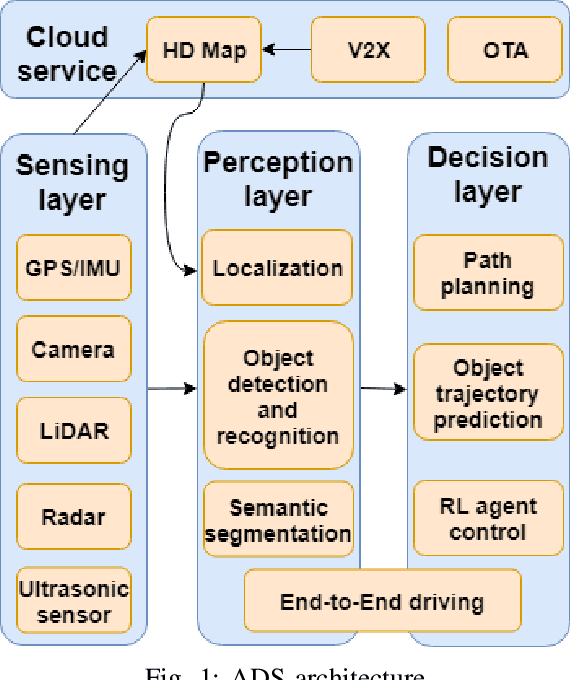

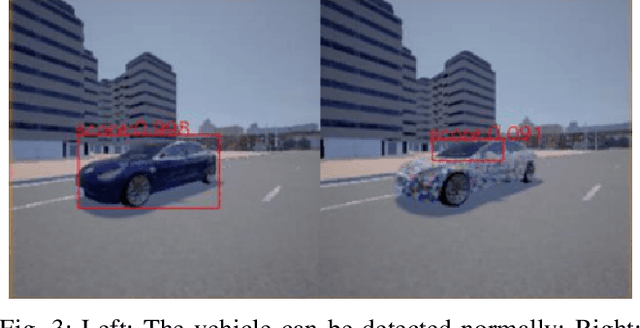

Abstract:The rapid development of artificial intelligence, especially deep learning technology, has advanced autonomous driving systems (ADSs) by providing precise control decisions to counterpart almost any driving event, spanning from anti-fatigue safe driving to intelligent route planning. However, ADSs are still plagued by increasing threats from different attacks, which could be categorized into physical attacks, cyberattacks and learning-based adversarial attacks. Inevitably, the safety and security of deep learning-based autonomous driving are severely challenged by these attacks, from which the countermeasures should be analyzed and studied comprehensively to mitigate all potential risks. This survey provides a thorough analysis of different attacks that may jeopardize ADSs, as well as the corresponding state-of-the-art defense mechanisms. The analysis is unrolled by taking an in-depth overview of each step in the ADS workflow, covering adversarial attacks for various deep learning models and attacks in both physical and cyber context. Furthermore, some promising research directions are suggested in order to improve deep learning-based autonomous driving safety, including model robustness training, model testing and verification, and anomaly detection based on cloud/edge servers.
SCEI: A Smart-Contract Driven Edge Intelligence Framework for IoT Systems
Mar 12, 2021



Abstract:Federated learning (FL) utilizes edge computing devices to collaboratively train a shared model while each device can fully control its local data access. Generally, FL techniques focus on learning model on independent and identically distributed (iid) dataset and cannot achieve satisfiable performance on non-iid datasets (e.g. learning a multi-class classifier but each client only has a single class dataset). Some personalized approaches have been proposed to mitigate non-iid issues. However, such approaches cannot handle underlying data distribution shift, namely data distribution skew, which is quite common in real scenarios (e.g. recommendation systems learn user behaviors which change over time). In this work, we provide a solution to the challenge by leveraging smart-contract with federated learning to build optimized, personalized deep learning models. Specifically, our approach utilizes smart contract to reach consensus among distributed trainers on the optimal weights of personalized models. We conduct experiments across multiple models (CNN and MLP) and multiple datasets (MNIST and CIFAR-10). The experimental results demonstrate that our personalized learning models can achieve better accuracy and faster convergence compared to classic federated and personalized learning. Compared with the model given by baseline FedAvg algorithm, the average accuracy of our personalized learning models is improved by 2% to 20%, and the convergence rate is about 2$\times$ faster. Moreover, we also illustrate that our approach is secure against recent attack on distributed learning.
An Analysis of Adversarial Attacks and Defenses on Autonomous Driving Models
Feb 06, 2020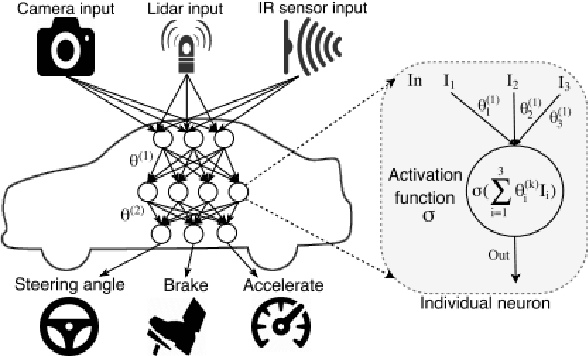
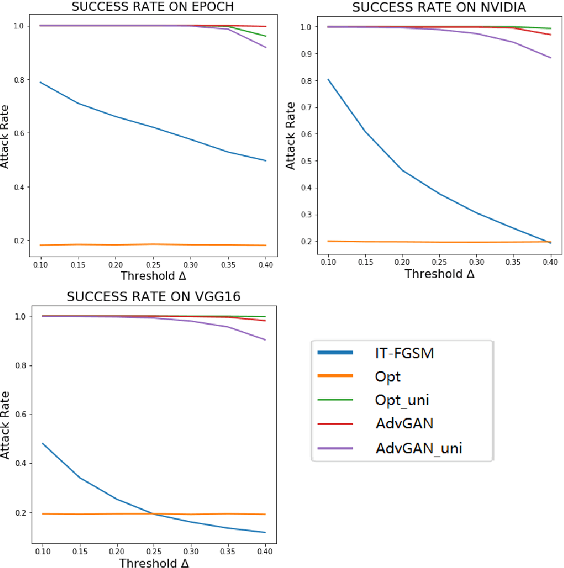
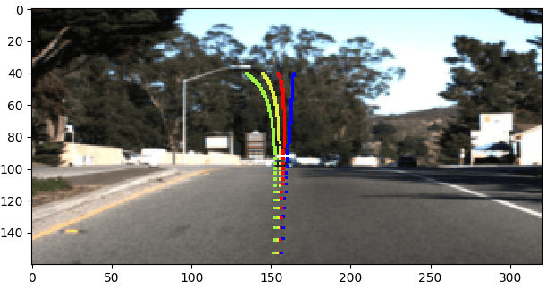
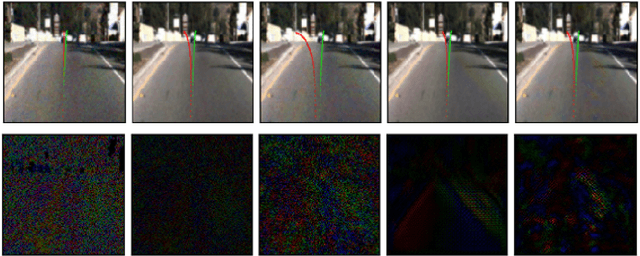
Abstract:Nowadays, autonomous driving has attracted much attention from both industry and academia. Convolutional neural network (CNN) is a key component in autonomous driving, which is also increasingly adopted in pervasive computing such as smartphones, wearable devices, and IoT networks. Prior work shows CNN-based classification models are vulnerable to adversarial attacks. However, it is uncertain to what extent regression models such as driving models are vulnerable to adversarial attacks, the effectiveness of existing defense techniques, and the defense implications for system and middleware builders. This paper presents an in-depth analysis of five adversarial attacks and four defense methods on three driving models. Experiments show that, similar to classification models, these models are still highly vulnerable to adversarial attacks. This poses a big security threat to autonomous driving and thus should be taken into account in practice. While these defense methods can effectively defend against different attacks, none of them are able to provide adequate protection against all five attacks. We derive several implications for system and middleware builders: (1) when adding a defense component against adversarial attacks, it is important to deploy multiple defense methods in tandem to achieve a good coverage of various attacks, (2) a blackbox attack is much less effective compared with a white-box attack, implying that it is important to keep model details (e.g., model architecture, hyperparameters) confidential via model obfuscation, and (3) driving models with a complex architecture are preferred if computing resources permit as they are more resilient to adversarial attacks than simple models.
 Add to Chrome
Add to Chrome Add to Firefox
Add to Firefox Add to Edge
Add to Edge